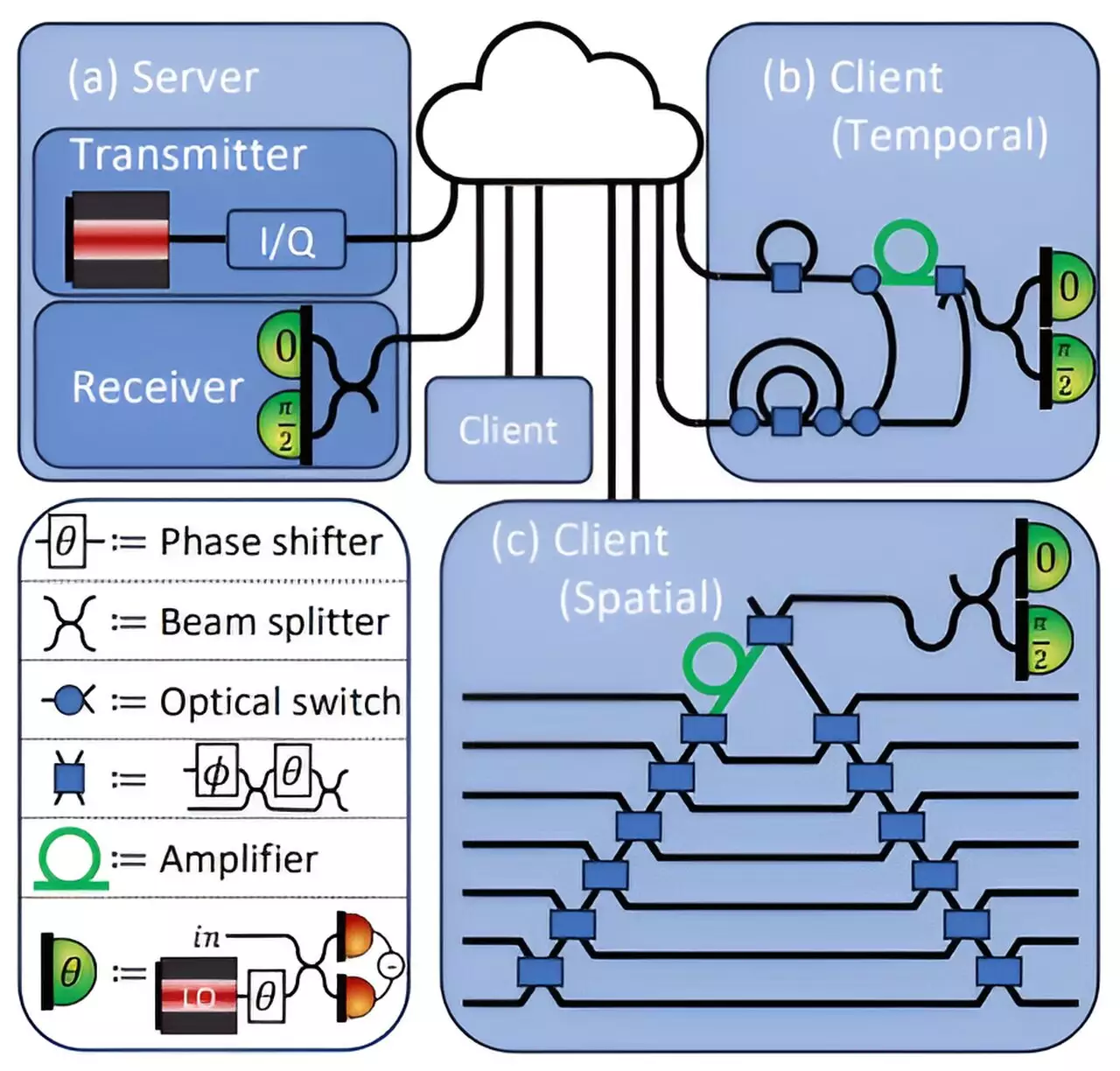Deep learning has emerged as one of the most transformative technologies across various sectors, ranging from healthcare to finance. These complex models demand significant computational power, typically provided by cloud computing resources. While the ability to harness such technology is promising, it raises critical concerns regarding data security—especially in sensitive domains like healthcare, where patient confidentiality must be upheld. The trepidation surrounding data security often leads institutions to hesitate in adopting innovative AI tools. However, researchers at MIT have taken a groundbreaking step to address these concerns through a novel security protocol that utilizes the quantum properties of light.
The recently developed security protocol by MIT aims to secure the transfer of sensitive data between clients and cloud-based servers, particularly during deep-learning operations. By encoding data within laser light—a crucial component of fiber optic communication—the researchers have crafted a system that leverages the principles of quantum mechanics. This approach makes it practically impossible for adversaries to intercept or replicate the information without being detected. As Kfir Sulimany, the lead author of a research paper published on this topic, articulates, “Our protocol enables users to harness these powerful models without compromising the privacy of their data or the proprietary nature of the models themselves.”
Traditional methods of securing data during transmission often rely on encryption techniques that, while reasonably effective, can still leave vulnerabilities open to determined threats. Digital computation processes typically permit data to be copied and modified, creating a window for malicious activities. In contrast, the quantum information paradigm includes a no-cloning principle, ensuring that it is impossible to create identical copies of quantum states. This inherent property serves as the foundation of MIT’s protocol, offering an added layer of security.
In the study, the researchers explored a scenario involving two parties: a client with confidential data, like medical images, and a central server that operates a deep-learning model capable of making critical predictions, such as detecting cancer. The challenge lies in enabling the client to obtain predictions from the server without exposing sensitive data or details about the model itself.
Within this quantum framework, the server encodes the weights of a deep-learning model in light transmitted via optical fibers. These weights play a critical role in the neural network, functioning as the mathematical parameters that guide computational processes. As the network operates, the client measures specific light signals necessary for generating the desired output without learning additional information about the model. Any residual data sent back to the server enables security checks, thus presenting a robust method for maintaining client confidentiality while allowing computational processes to occur.
One of the most compelling findings from the researchers’ tests is that the protocol successfully upholds an impressive accuracy rate—96%—while simultaneously ensuring that the exchange of information remains secure. The security of the data flows in both directions; the client is protected from potential server breaches, and the server’s proprietary data is equally safeguarded. The research noted that the potential information leak during operations amounted to less than 10% of what would be necessary for a malicious actor to extract any hidden details, marking a significant advancement in quantum-enhanced security.
Moving forward, the MIT team aims to explore potential applications of this security protocol in federated learning, a model that combines private data from multiple entities to create a central learning system without compromising data integrity. This research holds immense promise for enhancing data privacy across distributed architectures, paving the way for safer AI implementations in various fields.
Moreover, the researchers envision testing this protocol’s effectiveness under conditions that may introduce experimental imperfections. The intersection of quantum key distribution with deep learning could create avenues for implementing more robust security alongside advancements in model accuracy.
As deep learning models continue to shape the future of technology, ensuring the confidentiality and integrity of data remains paramount. The innovative security protocol introduced by MIT researchers not only highlights the potential of quantum computing but also exemplifies a forward-thinking approach to solve the urgent security dilemmas in the digital age. By merging concepts from diverse realms—quantum mechanics and deep learning—the research inspires optimism regarding the future of secure AI applications, ultimately allowing organizations to unlock the hidden power of their data without the cloud of privacy concerns looming overhead.


Leave a Reply